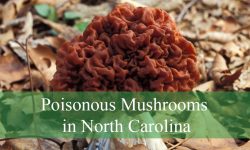Summer is the season of vibrant colors, and nothing enhances a garden like stunning flowers that bloom in summer. Whether you’re looking to create a picturesque backyard or simply enjoy the beauty of seasonal blossoms, there are countless varieties of flowers that bloom in summer to choose from. From bright sunflowers to elegant lilies, these gorgeous blooms will make any outdoor space come alive.
Here are 50 stunning flowers that bloom in summer, adding beauty to your surroundings.
Different Types of Flowers That Bloom in Summer
Sunflower
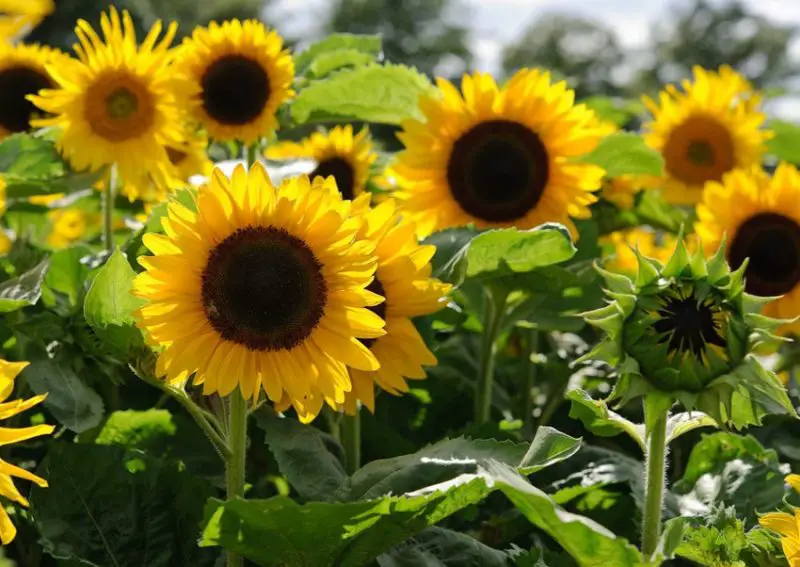
Sunflowers (Helianthus annuus) are towering annuals known for their large, golden-yellow blooms that follow the sun throughout the day. Best suited for USDA growing zones 2-11, they thrive in full sun and well-drained soil, making them ideal for bright and open landscapes. Their cheerful presence brings warmth and vibrancy to gardens, fields, and borders.
These summer bloomers are easy to grow from seed and require little care beyond occasional watering. Sunflowers are not only stunning but also functional—providing food for birds, bees, and other pollinators. Some varieties even produce edible seeds, making them a valuable addition to vegetable gardens. With their towering height and bold blooms, sunflowers make a striking statement in any setting.
Foxglove
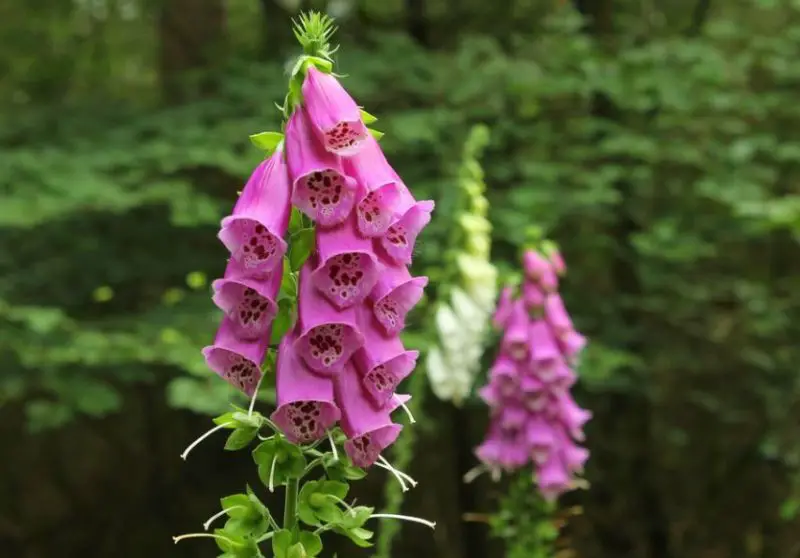
Foxglove (Digitalis spp.) is an eye-catching biennial that produces tall spikes of tubular flowers in shades of pink, purple, and white. Thriving in USDA growing zones 4-10, it prefers partial shade and moist, well-drained, loamy soil, making it a great choice for woodland gardens or shaded borders. Though foxgloves take two years to bloom, their impressive height and striking flowers make them well worth the wait.
This enchanting plant attracts pollinators like bees and hummingbirds, adding life to garden spaces. However, all parts of the foxglove plant are toxic to humans and animals, so caution is advised when planting in homes with pets or small children. With their dramatic flower spikes and vintage charm, foxgloves remain a favorite for cottage-style gardens.
Clematis
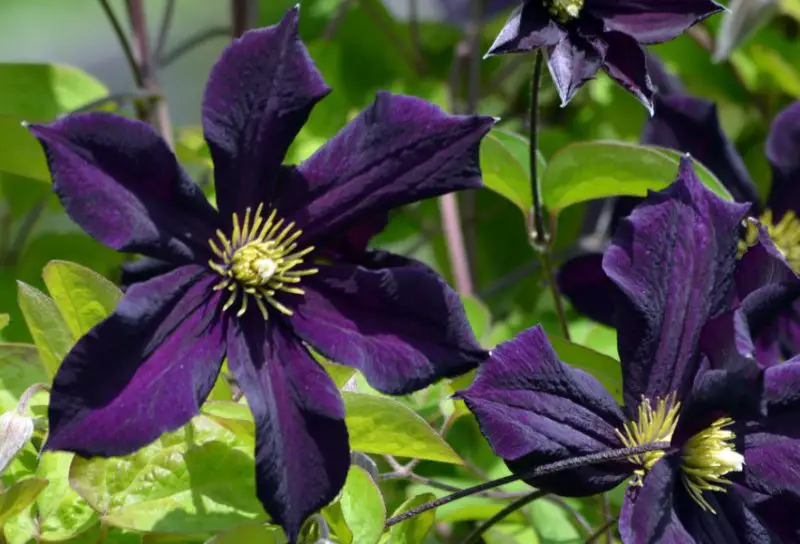
Clematis (Clematis spp.), also known as leather flower, is a stunning flowering vine that produces large, showy blooms in shades of blue, purple, pink, and white. Best suited for USDA growing zones 4-9, it thrives in full sun to partial shade and moist, well-drained soil. Clematis vines are popular for trellises, arbors, and fences, adding vertical interest to gardens.
Blooming from early summer into early fall, clematis is a long-lasting performer that benefits from regular pruning to encourage fresh growth. However, gardeners should exercise caution, as clematis is toxic to both humans and animals. With its elegant blossoms and climbing nature, this vine is a favorite among garden enthusiasts.
Chrysanthemum
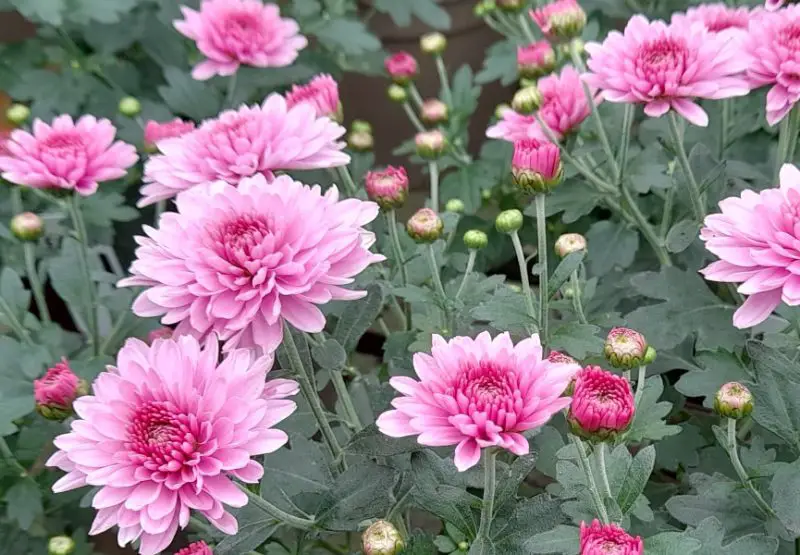
Chrysanthemums (Chrysanthemum spp.), commonly known as mums, are beloved perennials (often grown as annuals) with cheerful, pom-pom-like blooms in various vibrant colors. Flourishing in USDA growing zones 3-9, they prefer full sun and well-drained soil, making them a great choice for garden beds and containers.
To enjoy long-lasting blooms from summer into fall, select mums with unopened buds when purchasing. They are often used for fall displays, brightening landscapes with their rich hues. While these flowers are stunning, they are toxic to animals, so pet owners should be cautious when planting them.
Coreopsis
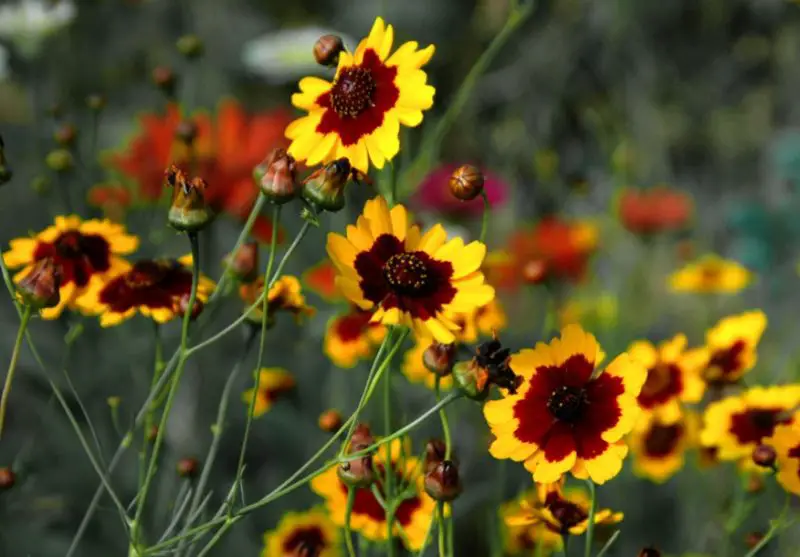
Coreopsis (Coreopsis spp.), also known as tickseed, is a hardy perennial that produces bright, daisy-like flowers in shades of yellow, orange, and red. Well-suited for USDA growing zones 4-9, it thrives in full sun and well-drained soil, requiring minimal maintenance.
This drought-tolerant plant is a great addition to wildflower gardens and pollinator-friendly landscapes. Blooming throughout the summer, coreopsis attracts bees and butterflies, making it an excellent choice for eco-friendly gardening. With its ability to withstand heat and dry conditions, coreopsis is perfect for beginner gardeners looking for a reliable burst of color.
Lavender
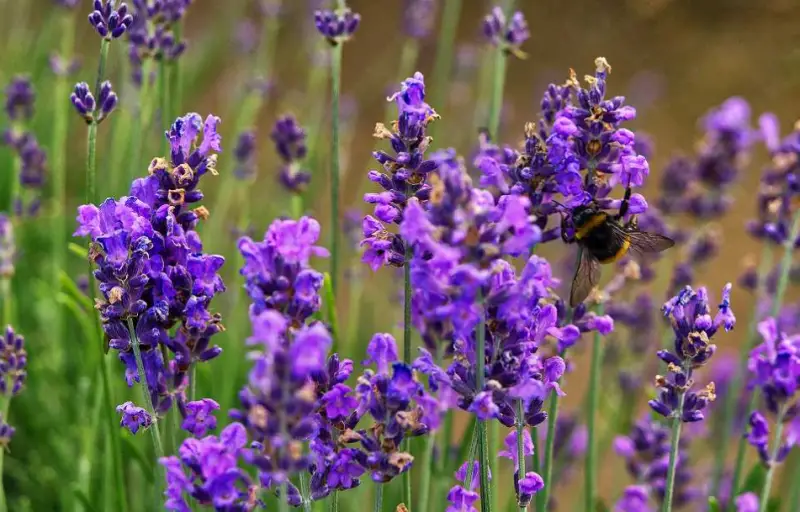
Lavender (Lavandula spp.) is a fragrant perennial known for its purple blooms and silvery-green foliage. Best suited for USDA growing zones 5-9, it grows best in full sun and well-drained, slightly alkaline soil. Lavender is widely used in herb gardens, borders, and rock gardens, offering both beauty and functionality.
Blooming primarily in summer, lavender’s aromatic flowers are often used in essential oils, sachets, and culinary applications. The plant is highly attractive to pollinators like bees and butterflies but toxic to cats, so pet owners should be mindful when planting. With its soothing scent and drought-resistant nature, lavender is a must-have for any garden.
Cardinal Flower
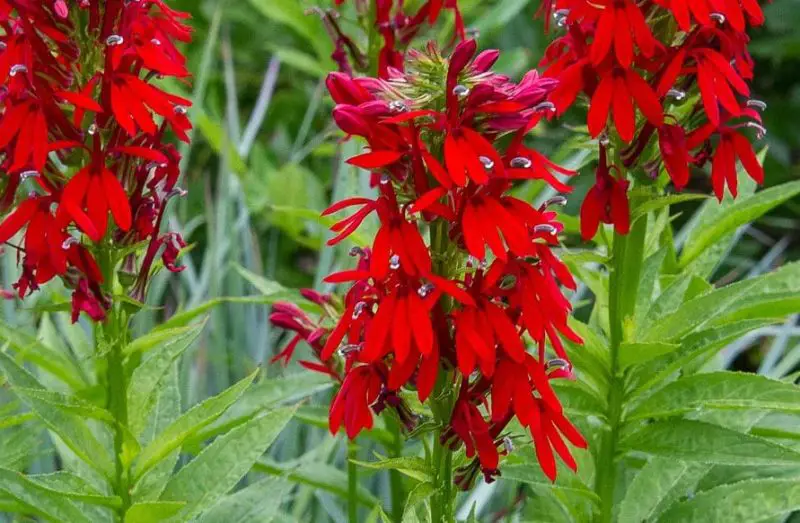
The cardinal flower (Lobelia cardinalis) is a striking perennial with vibrant red flowers that attract hummingbirds and butterflies. Thriving in USDA growing zones 3-9, it prefers partial shade to full sun and moist, well-drained soil, making it ideal for bog gardens, rain gardens, and areas near streams.
Cardinal flowers bloom from midsummer into early autumn, providing a bold pop of color in the landscape. While they are a favorite for wildlife gardens, all parts of the plant are toxic to animals, so care should be taken when planting in pet-friendly spaces. With their dramatic red blooms, cardinal flowers bring a touch of wild beauty to any setting.
Columbine
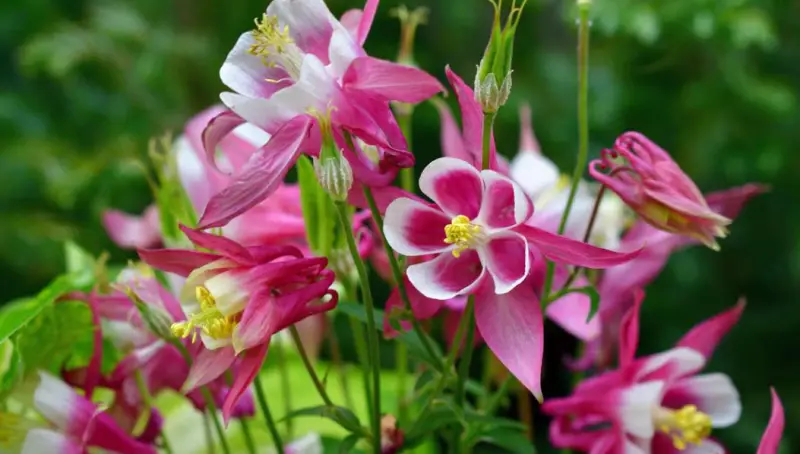
Columbine (Aquilegia spp.) is a charming, short-lived perennial known for its delicate, spurred flowers in shades of blue, purple, pink, red, and white. Thriving in USDA growing zones 3-9, it prefers partial shade and moist, well-drained soil, making it a great choice for woodland gardens and shaded borders.
Blooming in spring and summer, columbine attracts hummingbirds and butterflies, adding life to any garden. Its airy, nodding flowers create a whimsical look, making it a favorite for cottage gardens. Although columbine is low-maintenance, allowing the plant to reseed naturally helps ensure its continued presence in the garden.
Tiger Lily
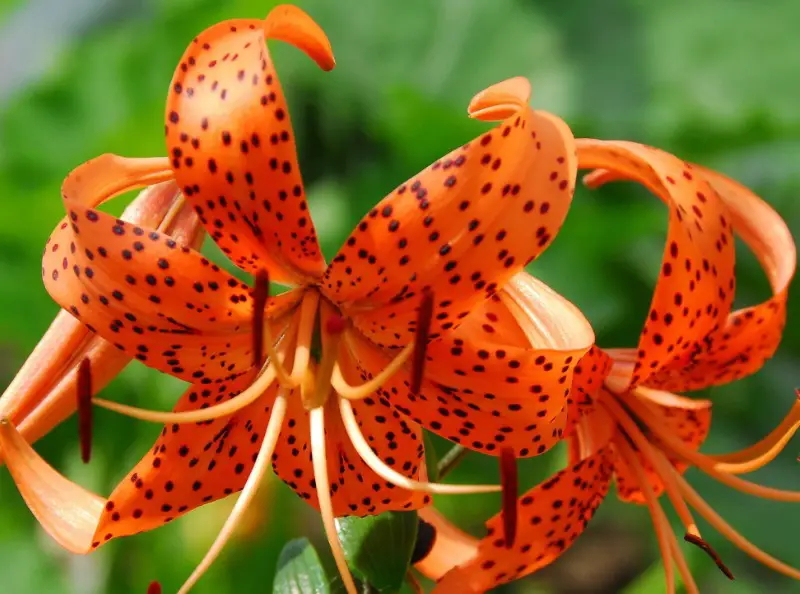
Tiger lily (Lilium lancifolium) is a stunning summer-blooming perennial with bold orange flowers marked with dark spots, resembling a tiger’s coat. It thrives in USDA growing zones 3-9, preferring full sun to partial shade and well-drained soil.
With its recurved petals and tall, graceful stems, the tiger lily makes a striking addition to flower beds and borders. Blooming from mid-to-late summer, it is a hardy plant that requires minimal care. However, gardeners should be aware that all parts of the plant are highly toxic to cats, making it unsuitable for pet-friendly gardens.
Hibiscus
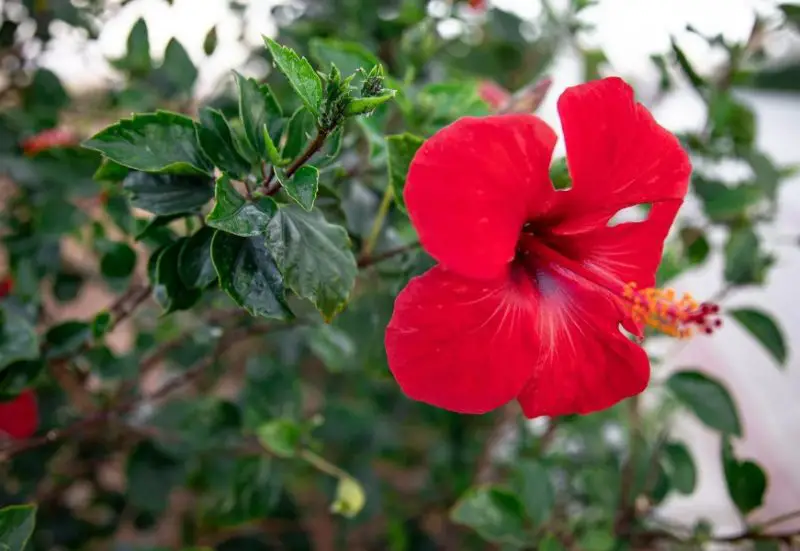
Hibiscus (Hibiscus rosa-sinensis) is a tropical flowering shrub known for its large, showy blooms, which can reach up to 12 inches in diameter. Best suited for USDA growing zones 4-11, it thrives in full sun and moist, well-drained soil, making it ideal for warm climates.
Blooming from June into fall, hibiscus flowers come in a variety of colors, including red, pink, yellow, and white. Their bold, exotic appearance makes them popular for garden landscapes, patio containers, and tropical-themed settings. Regular watering and occasional pruning help promote continuous flowering.
Daisy
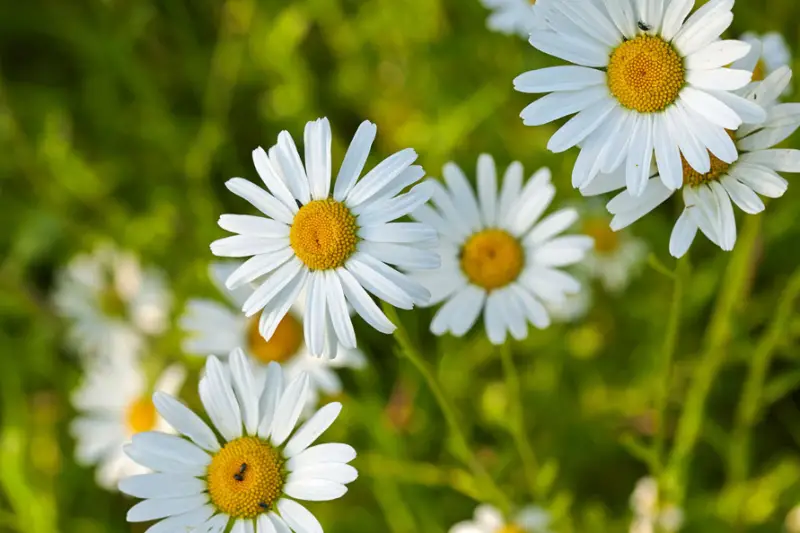
Daisy (Bellis perennis) is a cheerful, low-growing perennial with classic white or pink petals surrounding a bright yellow center. It flourishes in USDA growing zones 4-8, preferring full sun to partial shade and well-drained soil.
Blooming from May through July, daisies are often found in meadows, lawns, and cottage gardens. Their bright, simple beauty makes them a timeless garden favorite. However, gardeners should be cautious, as daisies are toxic to animals, making them less suitable for households with pets.
Liatris
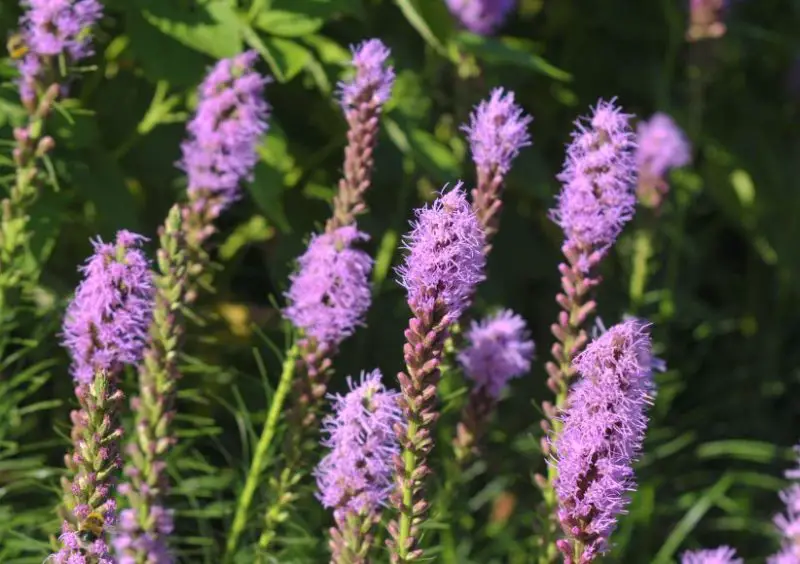
Liatris (Liatris spp.), also known as blazing star, is a hardy perennial with tall spikes of feathery purple, pink, or white flowers. It thrives in USDA growing zones 3-9, preferring full sun and well-drained soil.
Blooming from summer into early fall, liatris is a favorite among pollinators, attracting butterflies and bees. Its unique vertical form adds height and texture to flower beds and prairie gardens. This drought-tolerant plant is easy to grow and an excellent choice for wildflower gardens and natural landscapes.
Iris
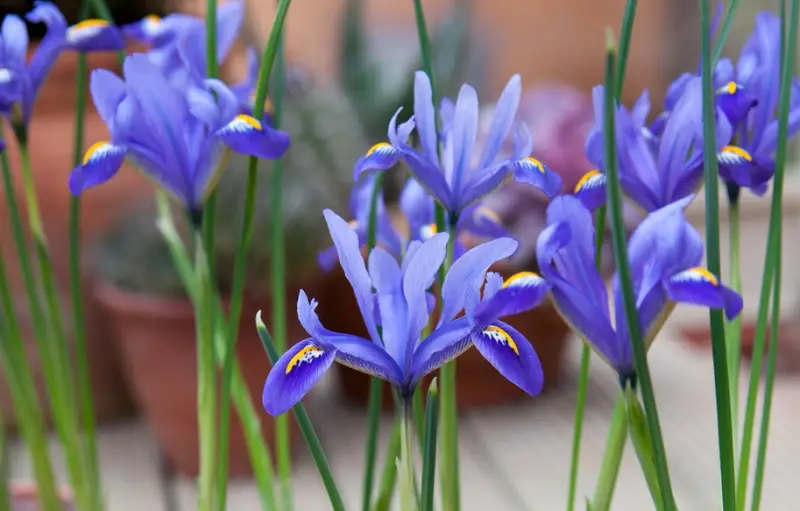
Irises (Iris spp.) are elegant perennials known for their sword-shaped blooms in shades of blue, purple, yellow, and white. Most varieties, such as the bearded iris, grow from rhizomatous roots. They thrive in USDA growing zones 3-9, preferring full sun to partial shade and moist, well-drained soil.
Although some irises may bloom in the first season, most will begin flowering in the second year. These striking flowers add a sophisticated touch to gardens and landscapes. However, gardeners should be cautious as irises are toxic to animals.
Delphinium
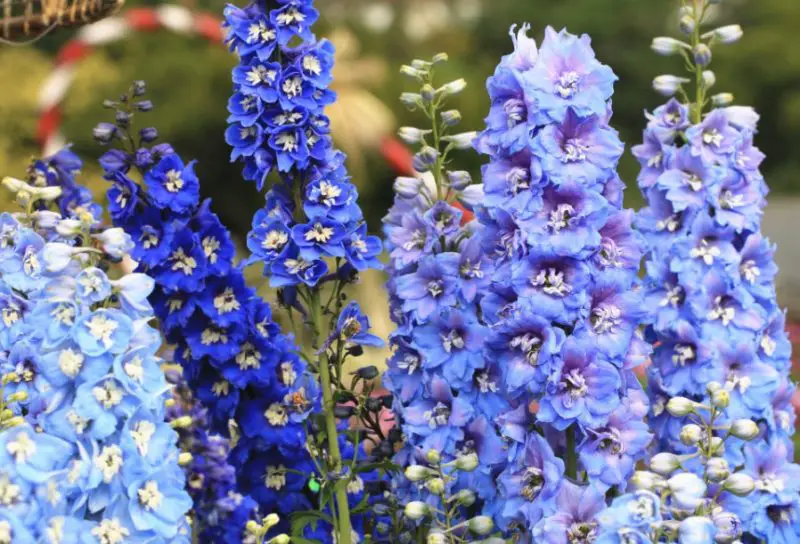
Delphiniums (Delphinium spp.), also known as larkspur, are tall perennials that produce spikes of vibrant flowers in shades of blue, purple, pink, and white. Best suited for USDA growing zones 3-9, they prefer full sun and moist, well-drained soil.
Blooming from early spring through summer, delphiniums create a dramatic vertical accent in flower beds. While stunning, they require protection from strong winds and staking for support. Delphinium is toxic to animals, so pet owners should be cautious.
Verbena
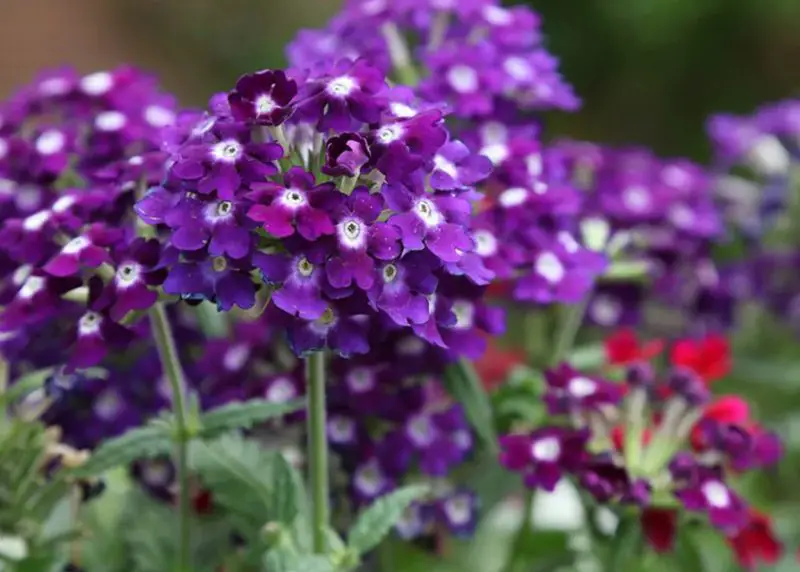
Verbena (Verbena spp.) is a stunning, short-lived perennial that produces clusters of tiny flowers in vibrant shades of pink, purple, and white. Blooming from spring through fall, this sun-loving plant thrives in USDA growing zones 7-11 and requires full sun and well-drained soil to flourish. Its adaptability makes it an excellent choice for warm climates, where it adds continuous color to gardens. Some varieties grow as ground cover, while others stand tall, offering versatility in landscaping.
In addition to its aesthetic appeal, verbena is highly attractive to pollinators like butterflies and bees, making it beneficial for biodiversity. However, certain types of verbena are toxic to animals, so pet owners should exercise caution. Regular deadheading helps promote extended blooming, ensuring a lively and colorful display throughout the growing season.
Lily
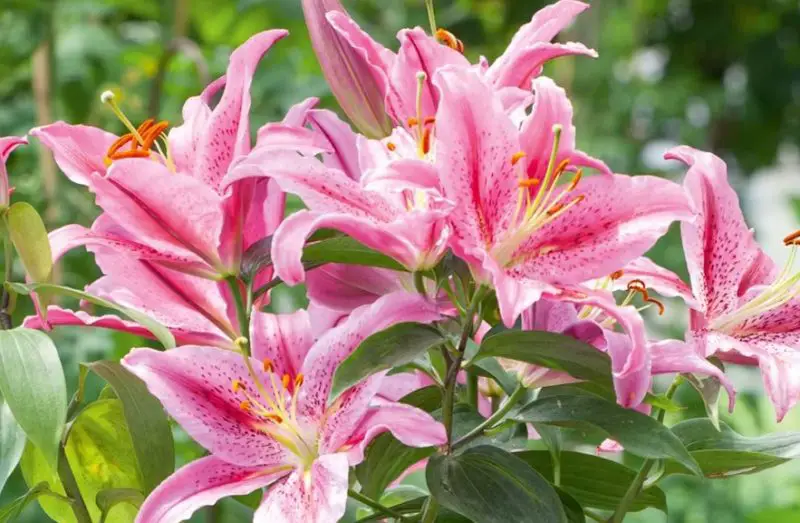
Lilies (Lilium spp.) are elegant, fragrant perennials with large, trumpet-shaped blooms in various colors, including white, yellow, pink, and red. These stunning flowers thrive in USDA growing zones 3-9, preferring full sun to partial shade and well-drained soil. Blooming in early to mid-summer, lilies add a dramatic and sophisticated touch to gardens, making them a favorite for floral arrangements.
Despite their breathtaking beauty, lilies are highly toxic to cats, and even a small amount can be dangerous. Gardeners with pets should take extra precautions when planting them. Regular watering and deadheading encourage healthy growth and prolonged blooming, ensuring that lilies remain a highlight of any summer garden.
Black-eyed Susan
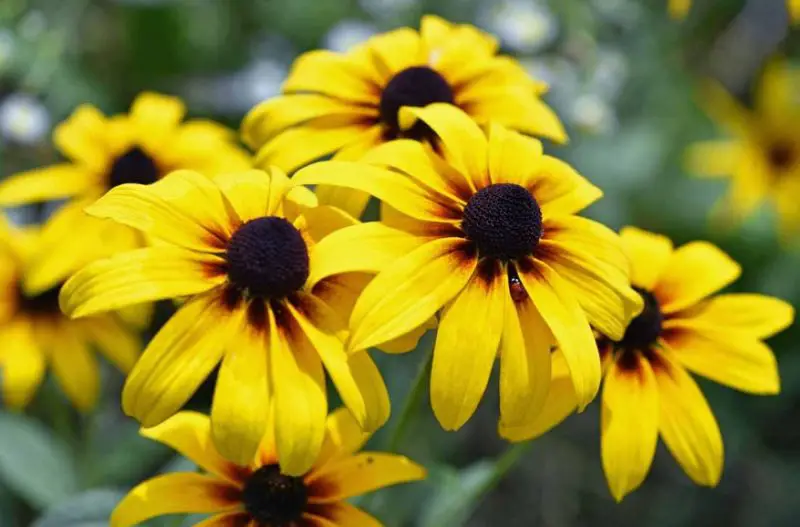
Black-eyed Susans (Rudbeckia hirta) are cheerful, sun-loving wildflowers known for their bright yellow, daisy-like petals surrounding a dark brown or black center. These resilient perennials flourish in USDA growing zones 3-9, requiring full sun and well-drained soil to thrive. Their ability to bloom all summer makes them a popular choice for garden borders, meadows, and pollinator-friendly landscapes.
These self-seeding plants are drought-resistant and require minimal maintenance, making them an excellent option for beginner gardeners. They also attract bees and butterflies, enhancing the ecological balance of the garden. Occasional deadheading can promote further flowering, ensuring a continuous burst of golden blooms throughout the season.
Borage
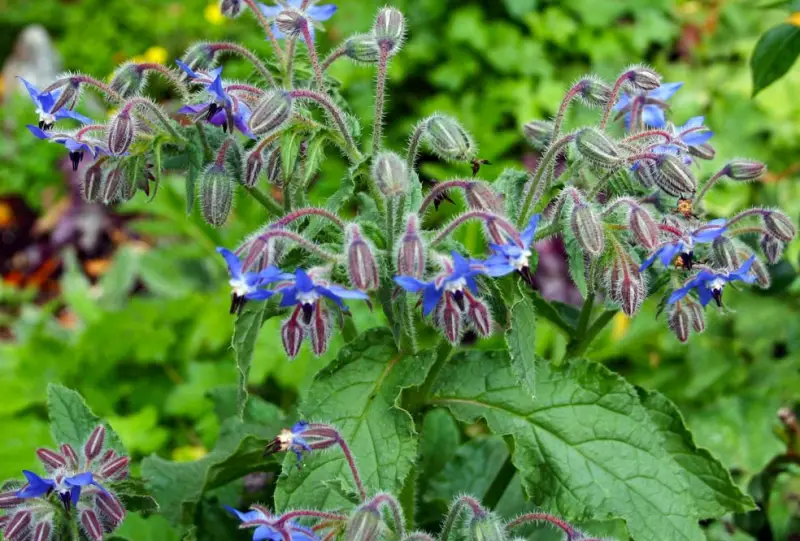
Borage (Borago officinalis) is a fast-growing annual herb prized for its star-shaped blue flowers and fuzzy green leaves. Known for its refreshing cucumber-like scent, borage thrives in USDA growing zones 2-11, favoring full sun and well-drained soil. Its ability to self-seed makes it a low-maintenance addition to both flower and vegetable gardens.
Highly attractive to bees and other pollinators, borage plays a crucial role in supporting biodiversity. While the plant has culinary and medicinal uses, certain parts contain small amounts of toxic compounds, so consumption should be limited. Its vibrant flowers and hardy nature make borage a valuable and visually appealing garden plant.
Penstemon
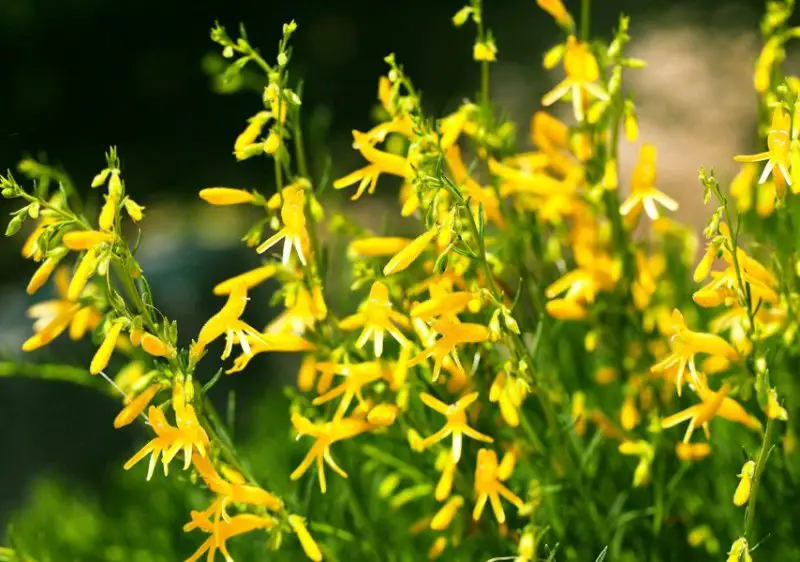
Penstemon (Penstemon spp.), also known as beardtongue, is a striking perennial that produces tall spikes of tubular flowers in shades of blue, purple, pink, and white. Best suited for USDA growing zones 3-8, penstemons prefer full sun to partial shade and well-drained soil. These showy flowers bloom in late spring and early summer, filling the gap between early-season bulbs and later-blooming perennials.
As a drought-tolerant plant, penstemon is an excellent choice for xeriscaping and pollinator gardens. Hummingbirds and bees are particularly drawn to its nectar-rich blooms. With some species reaching up to 8 feet in height, penstemons add structure and vertical interest to garden beds while requiring minimal upkeep.
Yarrow
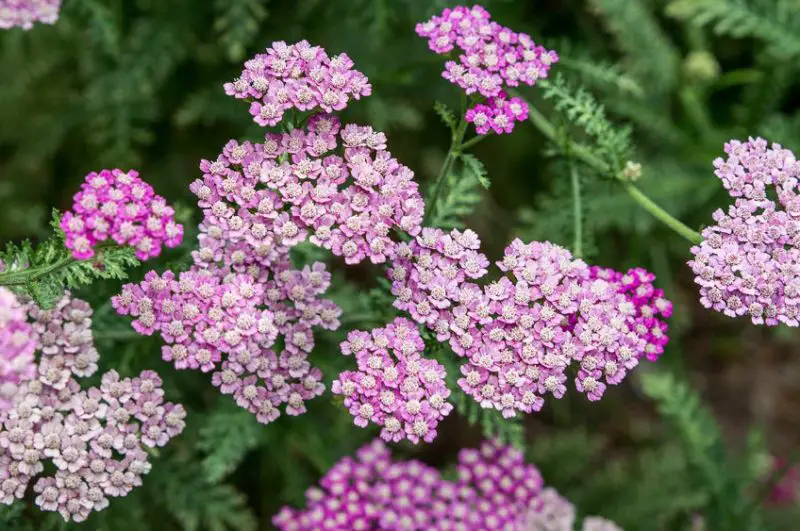
Yarrow (Achillea millefolium) is a hardy perennial known for its flat clusters of tiny flowers that bloom in shades of pink, yellow, and white. Thriving in USDA growing zones 3-9, yarrow prefers full sun and well-drained soil, making it an excellent choice for drought-tolerant gardens. If planted in the spring, it produces an abundance of summer blooms, adding texture and color to borders and wildflower meadows.
In addition to its ornamental appeal, yarrow attracts pollinators like bees and butterflies, supporting a healthy garden ecosystem. However, it is toxic to animals, so pet owners should exercise caution. Its low-maintenance nature and ability to self-seed make it a favorite among gardeners looking for long-lasting beauty.
Crocosmia
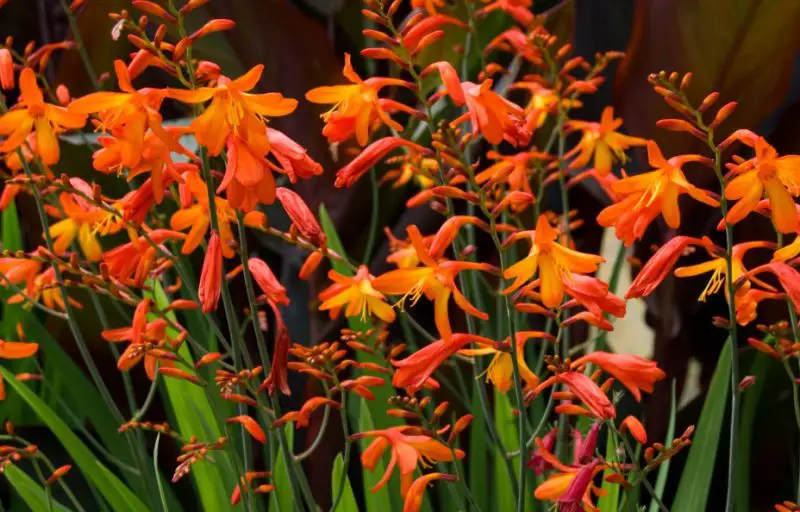
Crocosmia (Crocosmia spp.), also known as coppertips, is a striking perennial that produces clusters of tubular flowers in fiery shades of orange, red, and yellow. Well-suited for USDA growing zones 6-10, crocosmia thrives in full sun to partial shade and well-drained soil. Its sword-like foliage and bright blooms make it a standout in summer gardens, particularly in borders and cottage-style landscapes.
Emerging in early summer, crocosmia brings a burst of tropical color that lasts well into the season. This sun-loving plant is also a magnet for hummingbirds, adding movement and life to the garden. Its resilience and minimal care requirements make it a fantastic choice for both beginner and experienced gardeners.
Hydrangea
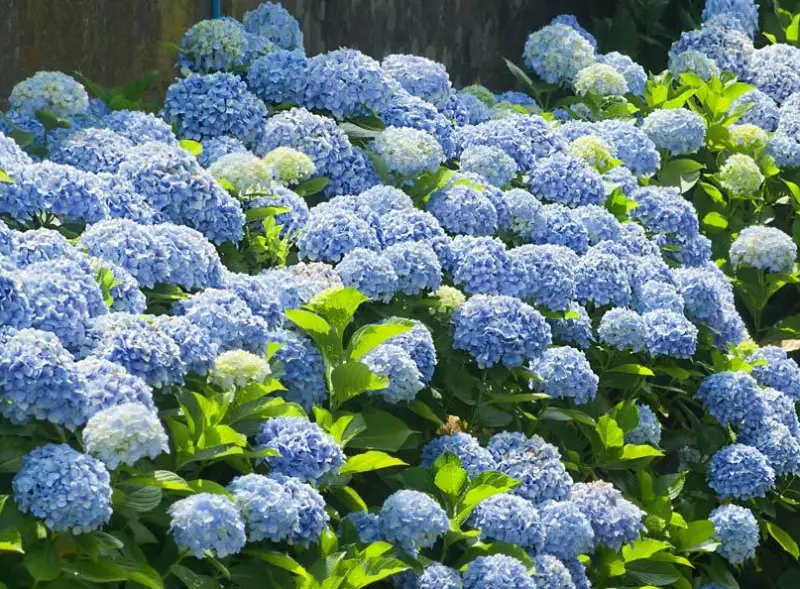
Hydrangeas (Hydrangea spp.) are among the most beloved perennial shrubs, known for their large, showy blooms in hues of blue, pink, purple, and white. Best suited for USDA growing zones 3-9, these stunning plants prefer partial shade and moist, well-drained soil, making them ideal for shaded garden corners or along fences and walkways. Depending on the variety, hydrangea flowers can be round and full, cone-shaped, or delicate and flat.
Blooming from early summer into the fall, hydrangeas provide long-lasting beauty throughout the warmer months. Their flower colors can even change based on soil pH, adding a unique element of garden customization. Regular pruning and adequate watering ensure healthy growth and abundant flowering year after year.
Roses
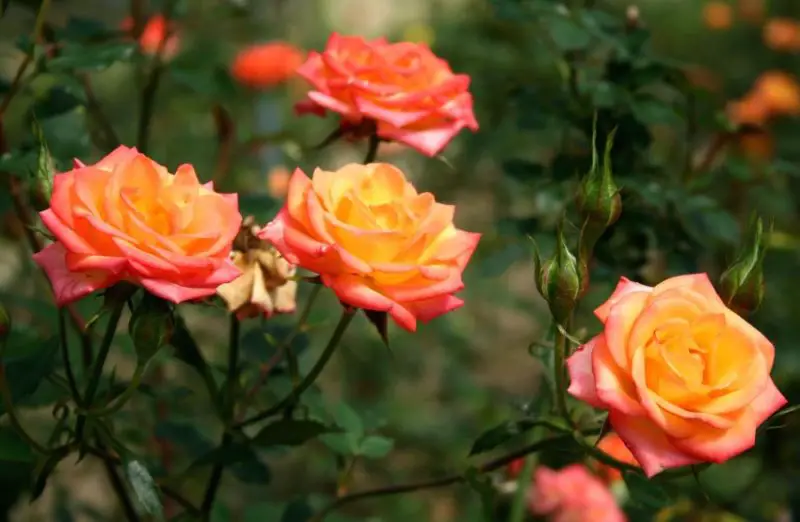
Roses (Rosa spp.) are classic garden favorites, celebrated for their velvety petals, thorny stems, and enchanting fragrance. Flourishing in USDA growing zones 3-11, roses thrive in full sun and well-drained soil, making them a versatile choice for landscapes, trellises, and containers. Available in shades of red, pink, yellow, white, and more, roses offer endless options for color coordination in gardens.
These timeless blooms appear from late spring through early fall, with many varieties reblooming throughout the season. From hybrid tea roses to shrub roses and floribundas, gardeners can choose from numerous types to suit their style. With proper care, including pruning and fertilizing, roses remain a stunning focal point for years.
Zinnia
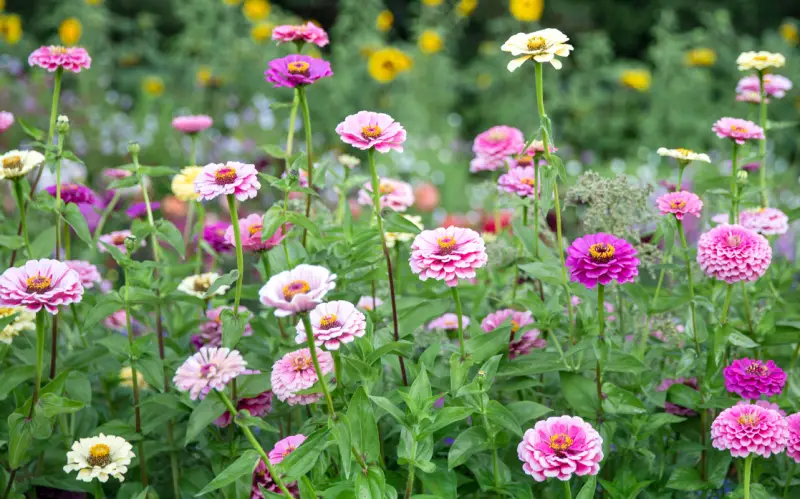
Zinnias (Zinnia elegans) are cheerful, easy-to-grow annuals that burst into vibrant, daisy-like flowers in a wide range of colors. Thriving in USDA growing zones 3-10, these sun-loving blooms prefer full sun and well-drained soil, making them ideal for warm-season gardening. Their fast growth and long blooming period make them a staple in summer flower beds and pollinator gardens.
Blooming from early summer into fall, zinnias provide a continuous splash of color with minimal upkeep. They are highly attractive to butterflies and bees, enhancing garden biodiversity. With their drought tolerance and ability to thrive in hot climates, zinnias are a must-have for low-maintenance, high-impact floral displays.
Bee Balm
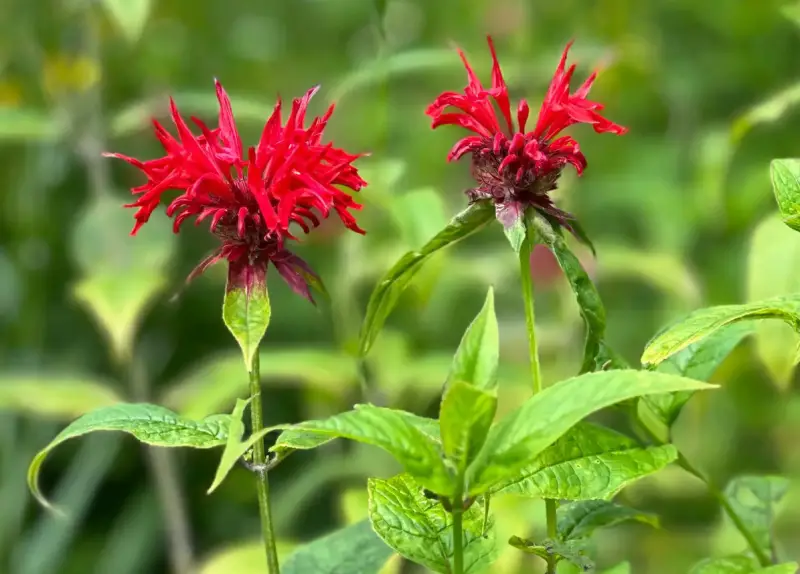
Bee balm (Monarda didyma) is a striking perennial known for its clusters of tubular flowers with spiky petals in shades of red, pink, and purple. Thriving in USDA growing zones 4-9, bee balm prefers full sun to partial shade and moist, well-drained soil. This fast-spreading plant grows by rhizomes and performs best in dry, humid-free climates, making it a great choice for pollinator gardens.
Blooming from mid-summer into early fall, bee balm is highly attractive to bees, butterflies, and hummingbirds, adding movement and life to the garden. Its aromatic foliage is often used in herbal teas and remedies. To prevent powdery mildew, ensure proper spacing for air circulation and keep the soil consistently moist but not waterlogged.
Marigold
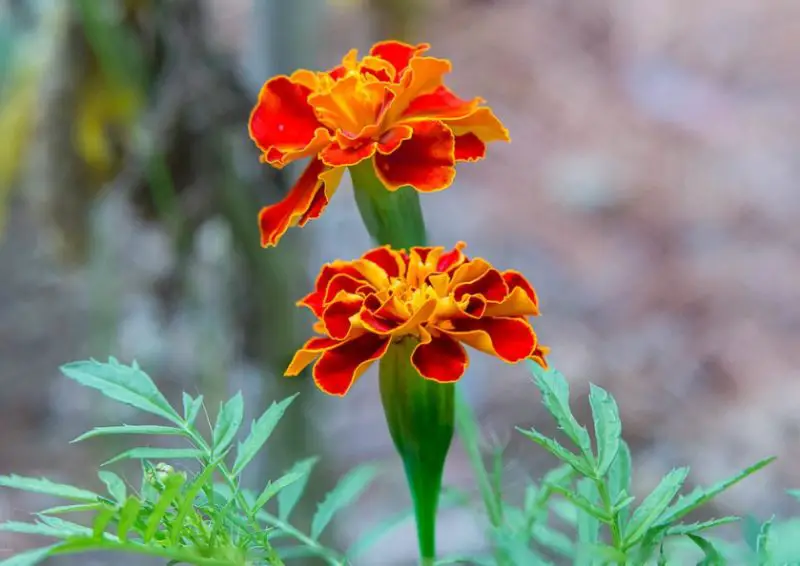
Marigolds (Tagetes spp.) are cheerful, easy-to-grow annuals known for their bright orange and yellow blooms and distinctive scent. Flourishing in USDA growing zones 2-11, these hardy flowers thrive in full sun and well-drained soil, making them perfect for warm-season gardens. Their ability to withstand heat and drought makes them a staple in borders, containers, and vegetable gardens.
Blooming all summer long, marigolds are excellent companions for vegetables, helping to repel pests such as nematodes and aphids. Deadheading spent flowers encourages continuous blooming throughout the season. With their minimal care requirements and vibrant colors, marigolds are an effortless way to bring warmth and brightness to any landscape.
Begonia
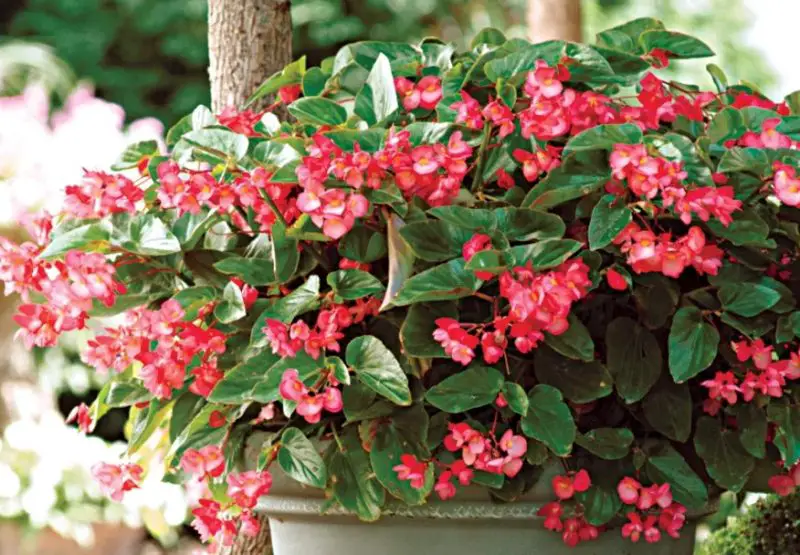
Begonias (Begonia spp.) are versatile flowering plants that produce clusters of single or double blooms in shades of red, pink, orange, and white. Best suited for USDA growing zones 10-11, begonias thrive in partial shade and well-drained soil, making them a popular choice for shaded patios, hanging baskets, and garden beds. These long-blooming plants add color from summer into late fall.
While begonias are admired for their lush foliage and bright flowers, they are toxic to animals, so pet owners should take precautions. Keeping the soil evenly moist without overwatering helps maintain healthy growth. With proper care, begonias provide continuous beauty in gardens and indoor spaces alike.
Shasta Daisy
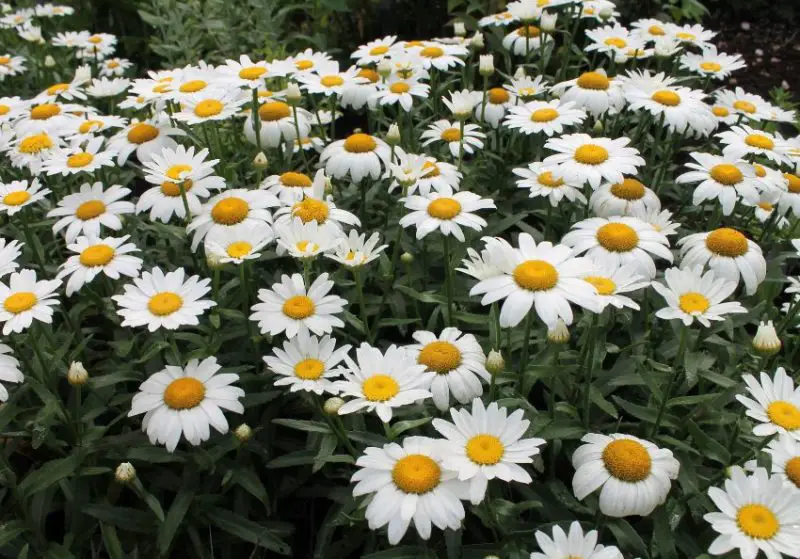
Shasta daisies (Leucanthemum × superbum) are classic perennials recognized for their large, white petals surrounding a bright yellow center. These cheerful flowers thrive in USDA growing zones 5-8, preferring full sun and well-drained soil. Blooming from spring through summer, they add a crisp, fresh look to flower beds, borders, and wildflower gardens.
Although Shasta daisies are low-maintenance, regular deadheading encourages prolonged blooming. Their sturdy stems make them excellent for cut flower arrangements. However, they can be toxic to animals if ingested, so pet owners should be cautious. Their adaptability and long-lasting beauty make Shasta daisies a timeless garden favorite.
Sweet William
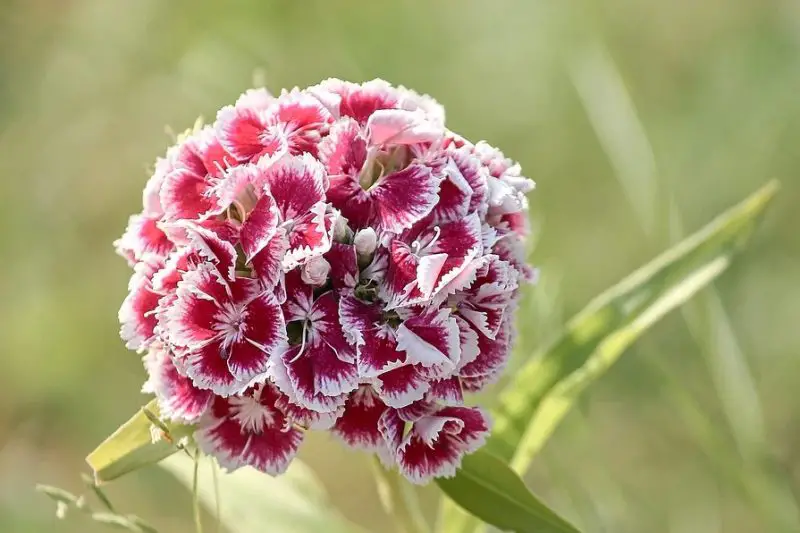
Sweet William (Dianthus barbatus) is a short-lived perennial or biennial, often grown as an annual, known for its clusters of small, fragrant flowers in shades of pink, red, and white. Thriving in USDA growing zones 3-9, this charming flower prefers full sun to partial shade and well-drained soil. With its extended blooming season from May through October, Sweet William adds a romantic touch to cottage gardens and floral borders.
Highly attractive to butterflies, Sweet William is perfect for pollinator-friendly landscapes. Though mildly toxic to humans and animals, its pleasant scent and easy-growing nature make it a beloved addition to gardens. Regular deadheading helps extend its bloom period, ensuring a vibrant floral display throughout the growing season.
Geranium
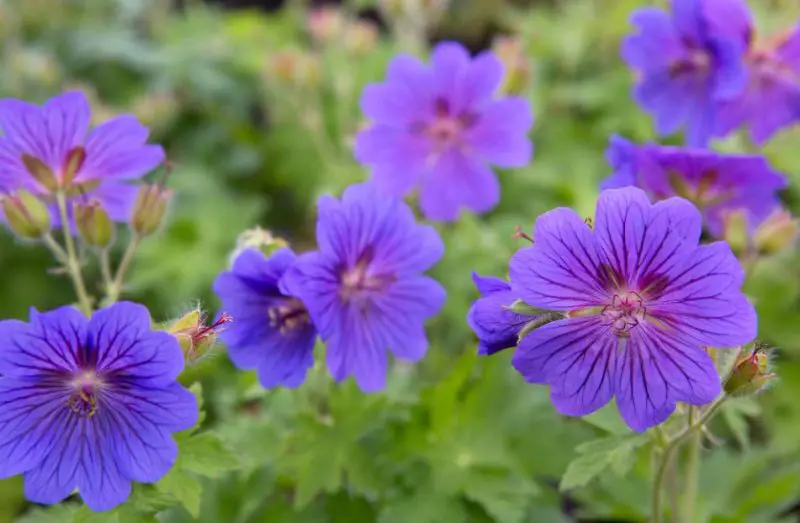
Geraniums (Pelargonium spp.) are popular garden and container plants prized for their fragrant clusters of colorful flowers in shades of red, pink, and white. Well-suited for USDA growing zones 9-11, they thrive in full sun to partial shade and well-drained soil, making them a versatile choice for various garden settings. With their long blooming period from spring through fall, geraniums provide continuous beauty and color.
These hardy flowers are drought-tolerant and easy to care for, requiring minimal maintenance aside from occasional deadheading to promote new blooms. Geraniums are also excellent for repelling mosquitoes, making them a functional addition to patios and outdoor spaces. Whether in hanging baskets, flower beds, or window boxes, they bring vibrant charm to any landscape.
Petunia
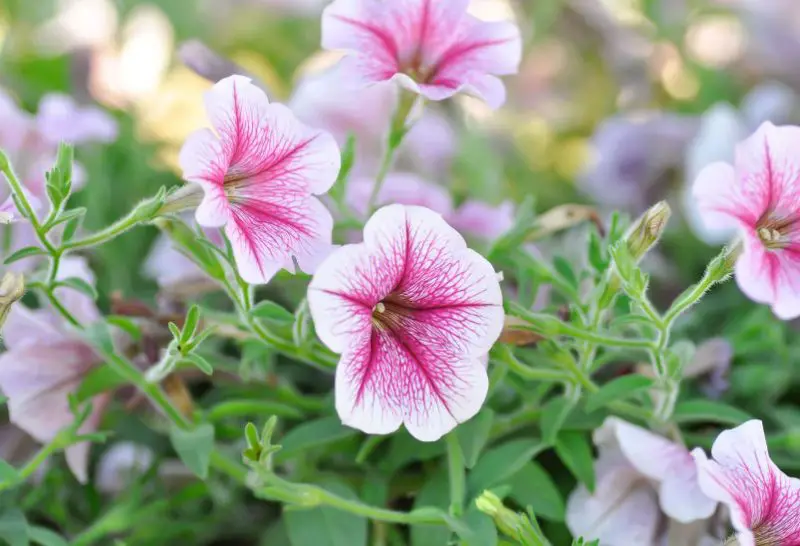
Petunias (Petunia spp.) are beloved annuals known for their trumpet-shaped flowers that come in an array of colors, from soft pastels to bold, vibrant hues. Thriving in USDA growing zones 10-11, petunias prefer full sun and well-drained soil, making them perfect for warm-season gardens. Their ability to bloom from spring through fall ensures a season-long display of eye-catching color.
These prolific bloomers are highly versatile, growing well in flower beds, hanging baskets, and containers. With regular deadheading, petunias continue to produce an abundance of flowers throughout the summer. Their cascading varieties make them ideal for adding a waterfall of color to balconies and garden edges, while their nectar-rich blooms attract pollinators like hummingbirds and butterflies.
Daylily
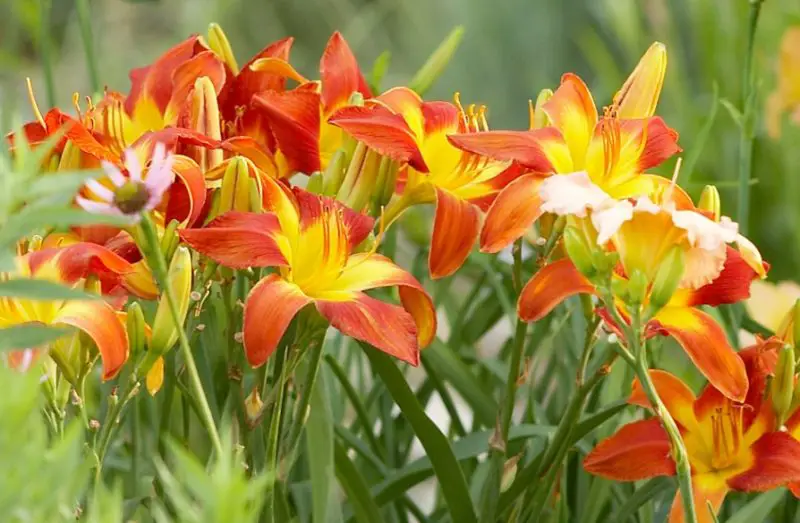
Daylilies (Hemerocallis spp.) are hardy perennials admired for their trumpet-shaped flowers that bloom in a wide variety of colors. Flourishing in USDA growing zones 3-10, these resilient plants thrive in full sun to partial shade and well-drained soil, making them a staple in low-maintenance gardens. Each flower lasts only a day, but new blooms continue to emerge throughout the summer and into autumn.
These adaptable plants can tolerate drought and poor soil conditions, making them ideal for borders and mass plantings. Their lush, arching foliage provides year-round interest, even when not in bloom. However, pet owners should note that daylilies are toxic to cats. With their effortless beauty and longevity, daylilies bring charm and color to any garden space.
Cosmos
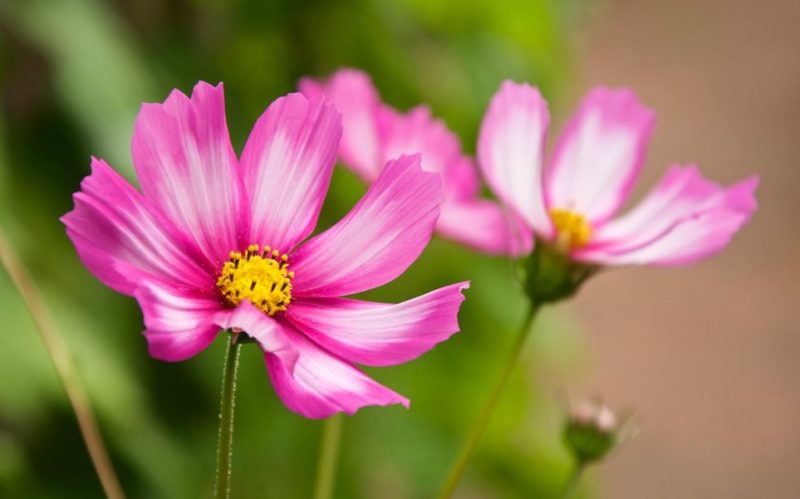
Cosmos (Cosmos bipinnatus) are classic cottage-garden flowers known for their delicate, daisy-like blooms in shades of pink, white, and purple. Best suited for USDA growing zones 2-11, they thrive in full sun and well-drained soil, making them an excellent choice for pollinator-friendly gardens. These fast-growing annuals bloom from summer through fall, filling garden beds with their airy, whimsical beauty.
Cosmos are easy to grow from seed and require little maintenance beyond occasional deadheading to prolong their blooming period. Their tall, feathery foliage adds a soft, graceful texture to landscapes, and their nectar-rich flowers attract bees, butterflies, and other beneficial insects. With their effortless charm and continuous blooms, cosmos are a must-have for any summer garden.
Blanket Flower
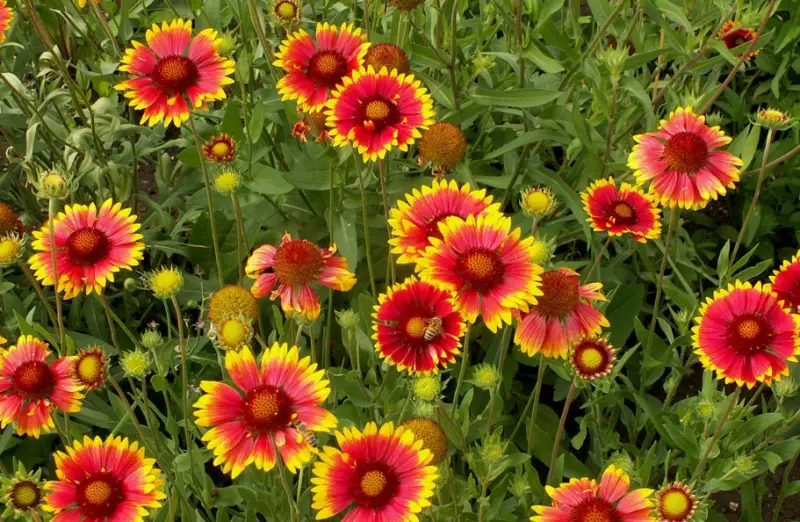
Blanket flowers (Gaillardia spp.) are hardy, easy-to-grow perennials that produce vibrant, daisy-like blooms in striking shades of red, orange, and yellow, often with bi-colored petals. Flourishing in USDA growing zones 3-10, these drought-tolerant plants thrive in full sun and well-drained soil, making them perfect for hot and dry conditions. Their long blooming season extends from summer through autumn.
With their fast-spreading nature, blanket flowers create a bold, eye-catching display in garden beds and borders. They are highly attractive to pollinators and add a touch of wildflower beauty to any landscape. Though slightly toxic to humans, they remain a popular choice for low-maintenance, high-impact gardens due to their heat resistance and ability to thrive in poor soil.
Salvia
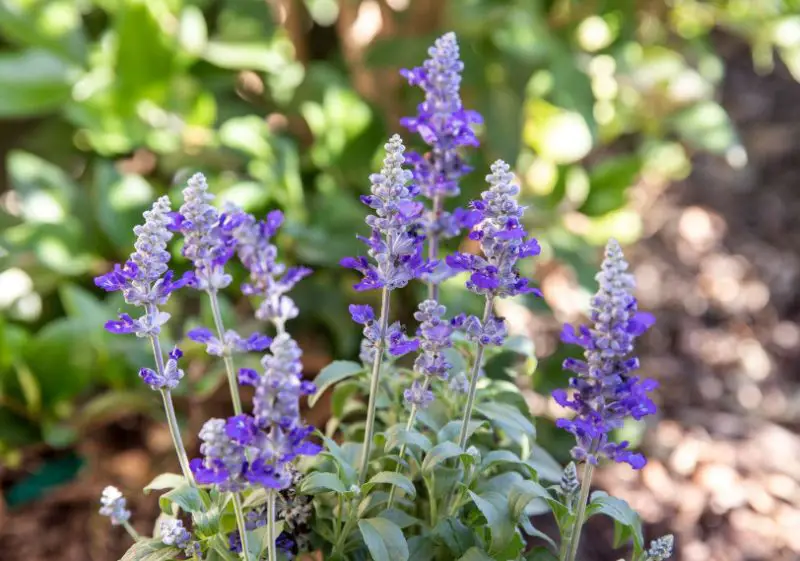
Salvia (Salvia spp.), also known as sage or Russian sage, is a striking perennial that produces spikes of fragrant, tubular flowers in shades of blue, purple, red, and white. Thriving in USDA growing zones 4-11, salvia prefers full sun and well-drained soil, making it a favorite for warm, sunny gardens. These drought-tolerant plants are loved by pollinators, attracting bees, butterflies, and hummingbirds with their nectar-rich blooms.
One of salvia’s standout qualities is its long blooming period, stretching from late spring into fall. With minimal care requirements, it is an excellent low-maintenance choice for borders, rock gardens, and container plantings. Regular deadheading encourages continuous blooms, ensuring a vibrant display of color throughout the season.
Fuchsia
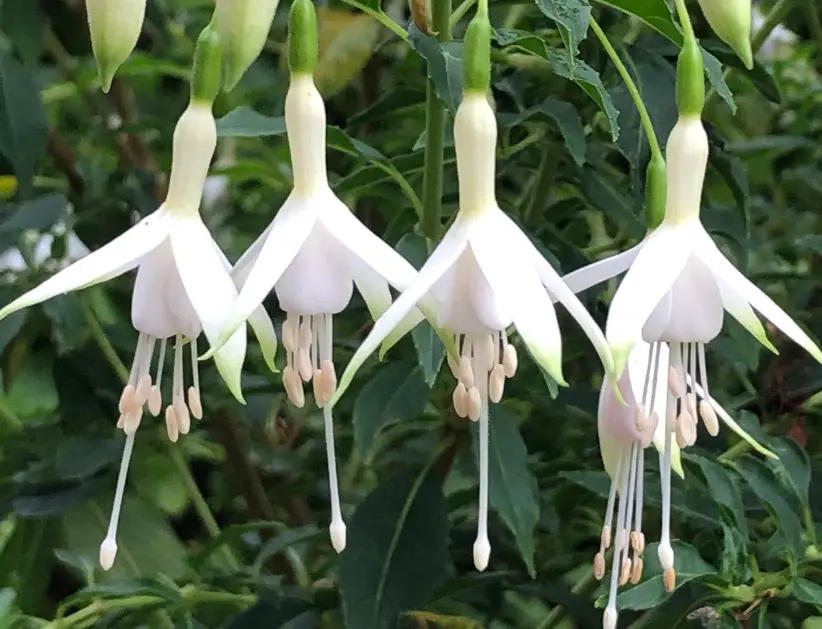
Fuchsia (Fuchsia spp.) is a captivating flowering plant best known for its pendulous, bell-shaped blooms in shades of pink, purple, and red. Flourishing in USDA growing zones 9-11, it thrives in partial shade and moist, well-drained soil, making it a popular choice for shaded garden spaces and hanging baskets. Its elegant, drooping stems create a cascading effect, adding a touch of charm to patios and porches.
Fuchsias bloom from spring into fall, providing long-lasting floral beauty. They require consistent moisture and benefit from regular feeding to maintain their lush appearance. While they attract hummingbirds and butterflies, fuchsias also require some protection from extreme heat, making them ideal for cooler climates or shaded environments.
Peony
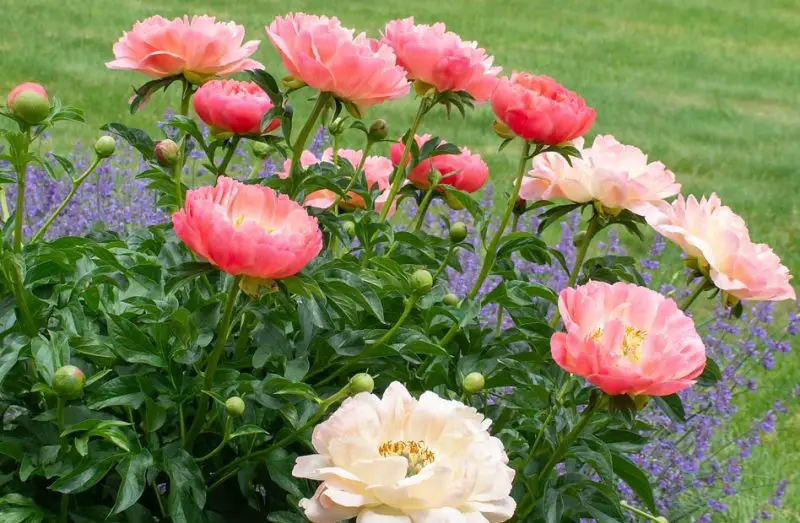
Peonies (Paeonia officinalis) are classic perennials cherished for their large, showy blooms and heavenly fragrance. Found in USDA growing zones 3-9, they flourish in full sun and fertile, well-drained soil, making them a staple in cottage gardens and floral arrangements. Available in shades of pink, white, and red, peonies add a timeless elegance to any landscape.
Peonies bloom from late spring into summer, with their lush petals creating a spectacular display. Though slow to establish, they can thrive for decades with proper care. These plants are deer-resistant but toxic to animals, so pet owners should exercise caution. With their breathtaking beauty and low maintenance needs, peonies remain a favorite among gardeners.
Balloon Flower
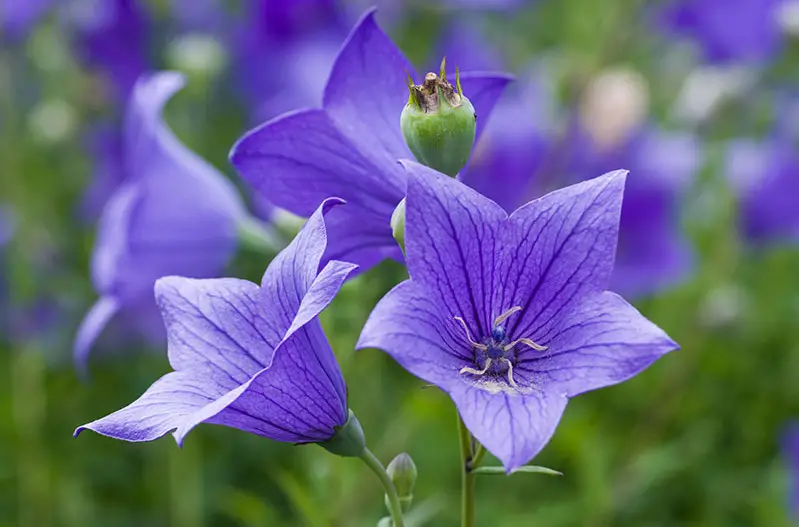
Balloon flowers (Platycodon grandiflorus) are easy-to-grow perennials named for their balloon-like buds, which open into star-shaped blooms in shades of blue, pink, and white. Thriving in USDA growing zones 3-8, they prefer full sun to partial shade and well-drained soil.
These low-maintenance plants bloom throughout the summer, attracting pollinators while resisting most pests and diseases. Balloon flowers work well in rock gardens, borders, and containers, offering long-lasting color and charm.
Phlox
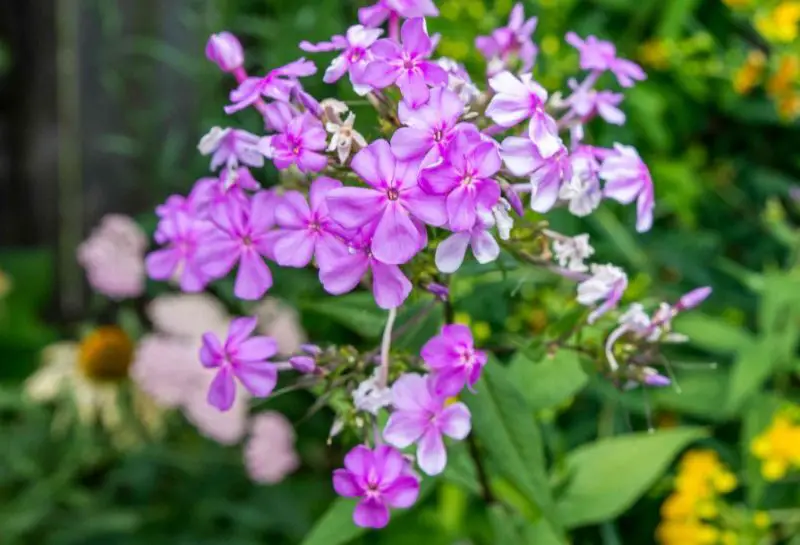
Phlox (Phlox paniculata) is a versatile flowering plant that includes both annual and perennial varieties, with clusters of fragrant flowers in pink, purple, and white. Depending on the species, phlox can be creeping or grow up to 5 feet tall.
Thriving in USDA growing zones 4-8, phlox prefers full sun to partial shade and moist, well-drained soil. It blooms from spring through late summer, making it an excellent choice for cottage gardens, wildflower meadows, and border plantings.
Dahlia
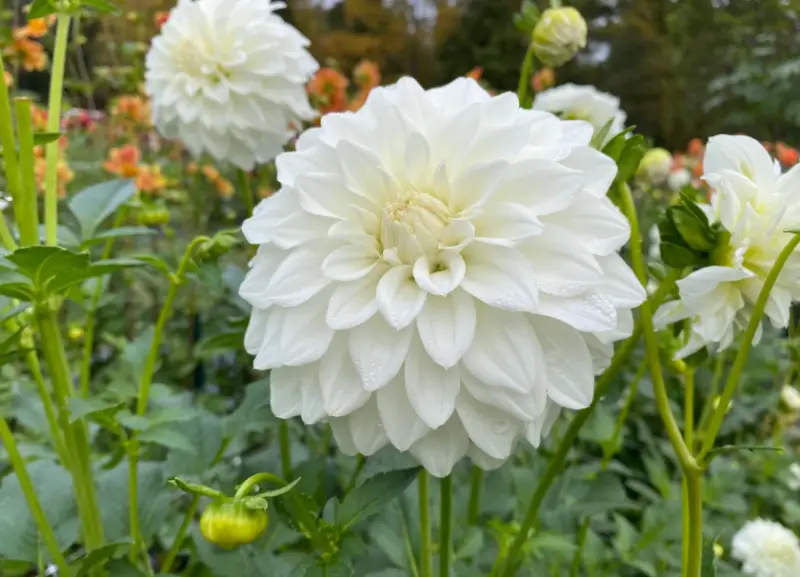
Dahlias (Dahlia spp.) are showy perennials famous for their large, colorful blooms, which range in shape from delicate pom-poms to dinner plate-sized blossoms. They thrive in USDA growing zones 8-11, preferring full sun and fertile, well-drained soil.
Blooming from midsummer until the first frost, dahlias provide a stunning late-season display. These flowers are ideal for cutting gardens, adding a bold splash of color to floral arrangements. However, dahlias are toxic to animals, so pet owners should handle them with care.
Rudbeckia
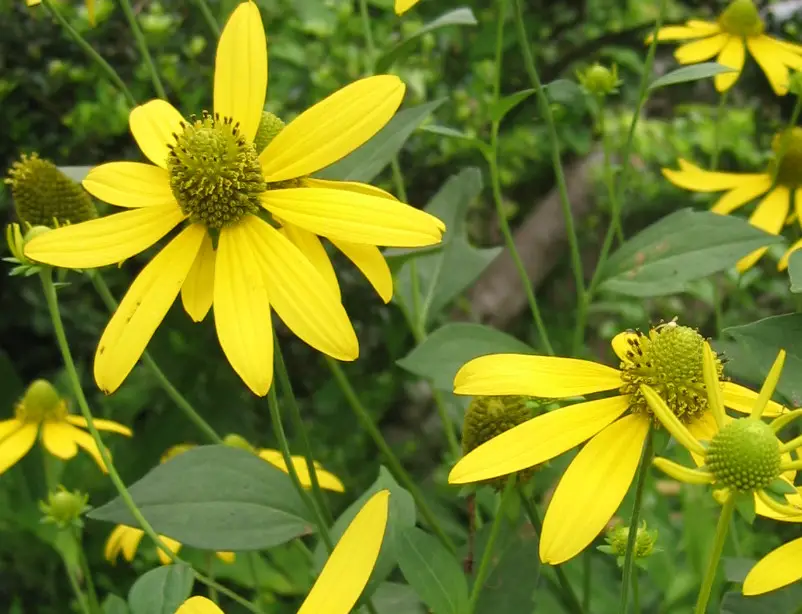
Rudbeckias (Rudbeckia spp.), commonly known as black-eyed Susans, are cheerful wildflowers with daisy-like blooms in shades of yellow, orange, cherry, or multicolored, all featuring dark centers. Thriving in USDA growing zones 3-9, they prefer full sun and well-drained soil.
These hardy perennials bloom throughout the hottest days of summer and into fall, bringing warmth and vibrancy to gardens and landscapes. Rudbeckias are low-maintenance, drought-tolerant, and attract pollinators, making them a staple in cottage gardens and wildflower meadows.
Aster
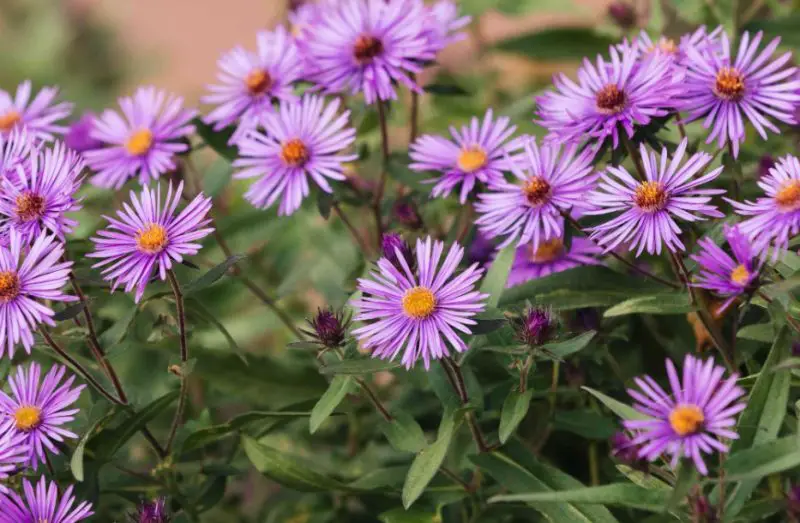
Asters (Symphyotrichum spp.) are late-season perennials that produce daisy-like flowers in shades of blue, purple, pink, and white. They thrive in USDA growing zones 3-8, preferring full sun to partial shade and well-drained, loamy soil.
Blooming from August through October, asters add fresh color to gardens when most summer flowers begin to fade. These plants are pollinator magnets, attracting butterflies and bees, and they work well in borders, rock gardens, and naturalized areas.
Canna Lily
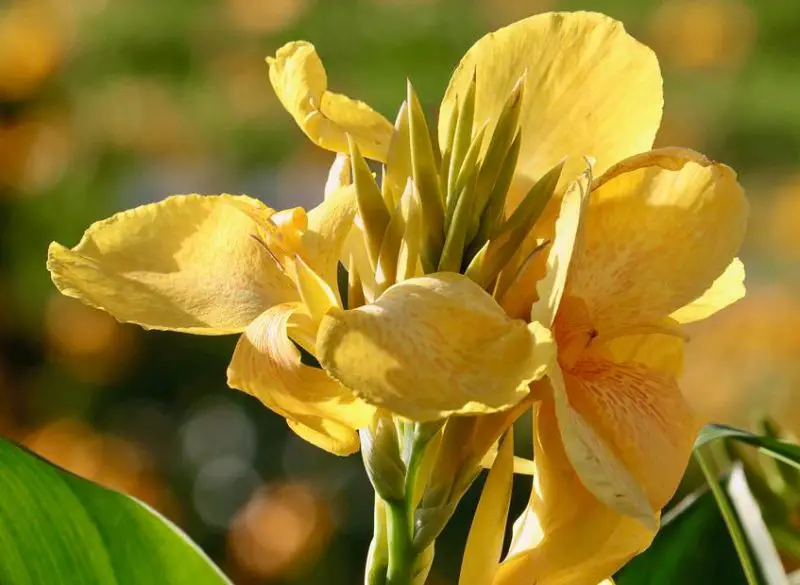
Canna lilies (Canna spp.) are tropical-looking perennials with large, bold blooms in red, orange, yellow, and pink. Thriving in USDA growing zones 8-11, they prefer full sun and moist, well-drained soil.
Most cannas grow 6 to 8 feet tall, adding dramatic height and structure to garden beds. While perennials in warm climates, cannas are typically grown as annuals in colder regions. Their striking foliage and continuous summer-to-fall blooms make them a garden favorite.
Coneflower
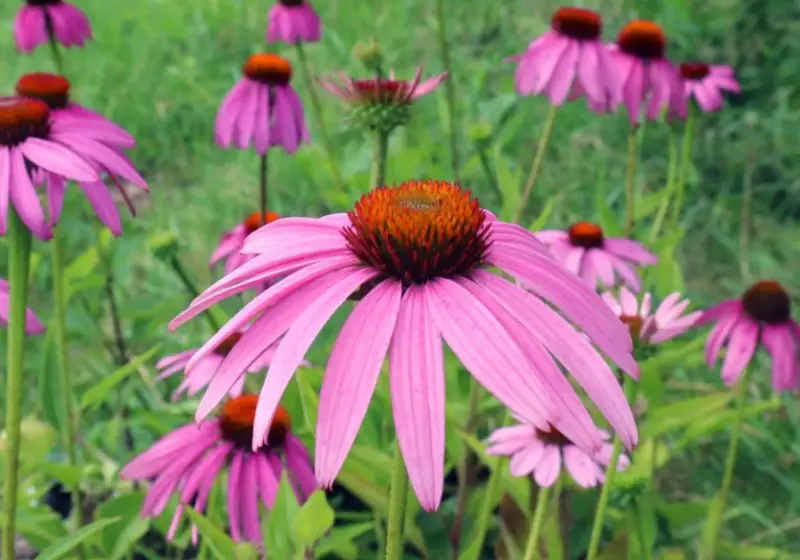
Coneflowers (Echinacea purpurea) are drought-tolerant perennials with daisy-like flowers in shades of pink, purple, and white. They thrive in USDA growing zones 3-9, preferring full sun and well-drained soil.
Purple coneflowers are a staple in many gardens, attracting bees, butterflies, and birds. Though they can be planted in early spring, they may take a season or two to establish and flower. Their resilience, medicinal properties, and extended bloom time make them highly sought after.
Sea Holly
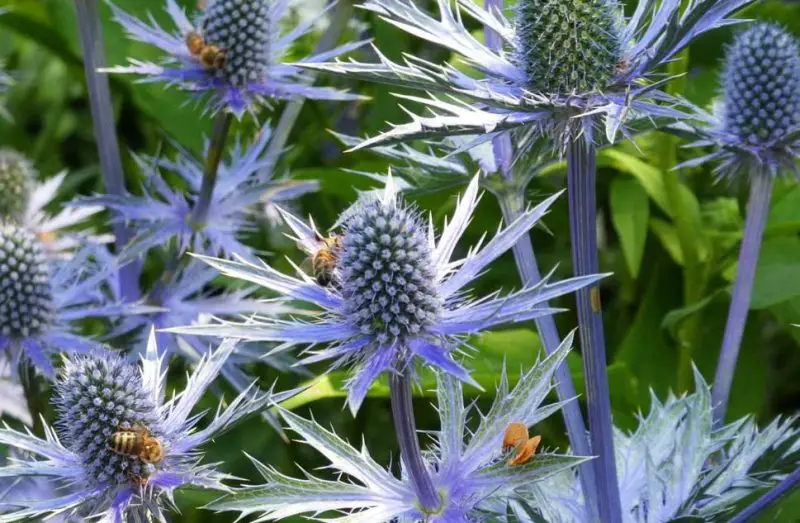
Sea holly (Eryngium spp.) features distinctive steel-blue, cone-shaped flower heads surrounded by spiky, silvery foliage. Well-suited for USDA growing zones 4-9, it thrives in full sun and well-drained, sandy, or loamy soil.
These low-maintenance, long-living perennials bloom from midsummer into fall, creating an eye-catching display in borders and dry gardens. Sea holly is deer-resistant, drought-tolerant, and excellent for cut or dried arrangements, making it a unique addition to any garden.
Conclusion
These 50 gorgeous flowers thrive in the summer heat, bringing color, fragrance, and beauty to any garden. Whether you prefer bold and bright or soft and delicate, there’s a summer bloom perfect for you!


